Make your Plant of the Year choice known at the 2024 Annual Meeting. All in-person and virtual attendees will vote for one nominee in each category – Rare & Unusual and Backyard Perennial. Join us, see great speakers, have breakfast and lunch with other members, and vote for the Plant of the Year!
Nominees for 2024 Rare Plant of the Year
Text by John Suskewich



Cypripedium acaule
Pink Lady’s Slipper
Seeing Pink Lady’s Slipper on a walk in the woods, sometime in May, a plant lover’s endorphins really kick-in. The pink and tan flower has an unusual moccasin shape and dangles from a stem that rises from a pair of veined basal leaves. It has a unique design feature for pollination by bumblebees, which requires them to follow a one-way path through the flower, forcing insects to take a pre-determined route past its reproductive parts, sort like the way Ikea makes you travel past all their sales displays before you get to the exit. Cypripedium acaule is not common but can readily be seen at various places in New Jersey, such as near Ramapo Lake in Bergen County and at Cheesequake Park near the center of the state.
Photo credits:
(1) John Lynch, Native Plant Trust
(2+3) Hervé Barrier
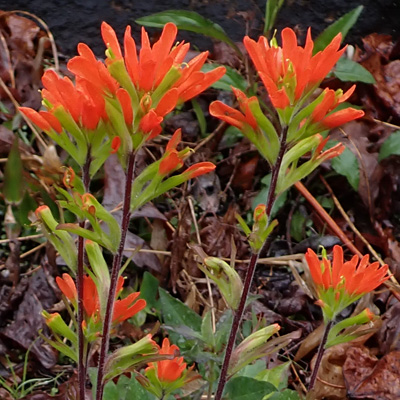


Castilleja coccinea
Scarlet Indian Paintbrush
This biennial plant is one of the few New Jersey representatives of the Orobanchaceae or “broomrape” family. (not my idea) According to MOBOT, it is primarily found “in prairies, rocky glades, moist and open woodlands, thickets and streambanks” What look like flowers are actually very bright, very colorful, very vermilion bracts that contain the actual flowers which are tiny and greenish. Because it is semi-parasitic and grows best near a companion plant, Scarlet Paintbrush is reputed to be tough to establish in a garden, but it is striking, vivid and probably worth the effort. Sounds like seeing it growing in the wild would be worth the effort too, even if it meant getting tangled up in a razor wire of wild greenbriar.
Photo credits: Millie & Hubert Ling



Platanthera integra
Yellow Fringeless Orchid
Platanthera integra, Yellow Fringeless Orchid is a very rare, exceedingly exquisite denizen of the acidic swamps and bogs of New Jersey’s Pine Barrens. From mid-July to mid-August from a base of small narrow leaves, this gem sends up a stem a foot and a half high, clothed in a few more small narrow leaves, and topped with an inflorescence maybe 3” long of delicate, fringeless! (unlike some of the other representatives of this genus) yellow to orange flowers. Always uncommon, its population decline over time has been attributed to habitat loss, especially fire suppression practices that allow it to become “shaded out.” This is another orchid pollinated by bumblebees.
Photo credit: Millie & Hubert Ling



Ribes missouriense
Missouri Gooseberry
Ribes missouriense, the Missouri Gooseberry, is a native, ornamental, deciduous shrub that in summer produces a small fruit, edible after you dump enough sugar on it, like other gooseberries and currants. The plant grows about three feet high, prefers at least some sun, has lobed palmate leaves, and wields sneaky, nasty thorns along the arching stems that’ll scratch you good like an clawed cat. It can be found in thickets, near wood edges, and around dry glades. The flowers are small, clustered, and drooping, and are followed by tart green fruits. Maybe you can make a kind of cassis out of them like my grandmother made with blackcurrants (also peach pits and dandelions.) Probably not a candidate for a garden since it’s considered an “alternate host for white pine blister rust” like other Ribes.
Photo credit:
(1) Toadshade Wildflower Farm
(2+3) Wikimedia Commons
Nominees for 2024 Backyard Perennial of the Year
Text by John Suskewich



Lobelia siphilitica
Great Blue Lobelia
Lobelia siphilitica, Great Blue Lobelia, is the blue brother of remarkably red cardinal flower, L. cardinalis. They are both part of the very garden-worthy bellflower family, Campanulaceae. In the wild, where it is thrilling to come upon, Great Blue Lobelia is most often seen in part sun to part shade, near streams, sloughs, and other wetlands, telling you that in the garden it prefers moist soil. Where content, it attains a height of two to three feet and colonizes through self-seeding. In most gardens, it persists for years. The summer flowers of Great Blue Lobelia are various shades of violet-blue, lipped, lobed, and arranged on a long stalk. They are an important food source for several native bees, bumblebees, and hummingbirds.
Photo credits: Mary Free, Master Gardeners of Northern Virginia
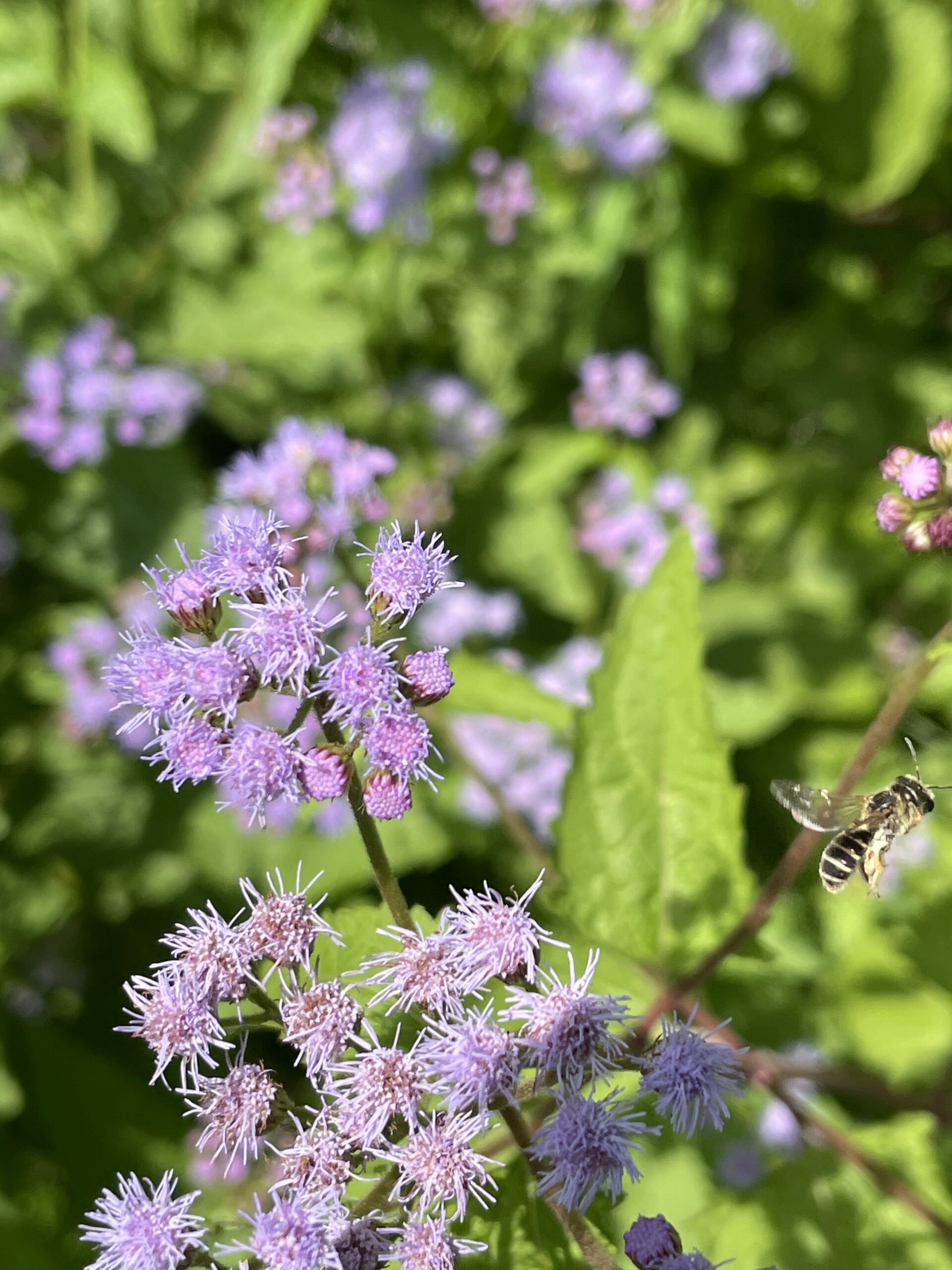


Conoclinum coelestinum
Blue Mist Flower
Conoclinum coelestinum, Blue Mist Flower is a very pretty plant that looks like a blue boneset or snakeroot, or a hardy, taller version of the annual ageratum sold in garden centers. Conoclinum coelestinum blooms late in the season, is very easy to grow, and adds a touch of sapphire to the fall flower palette. Height can be a foot or two, and breadth, well, one almost fatal flaw of this plant is its aggressiveness, because where happy it spreads through rhizomes and self-seeding. If you are good at weeding or have other aggressive plants that can duke it out with mistflower, it’s worth having. It attracts many native autumn pollinators: bees, butterflies, and skippers, and displays a strong degree of deer-resistance.
Photo credits:
(1+3) Michael Jacob
(2) Flower – September – Wake Co., NC, Cathy DeWitt, CC BY 4.0, North Carolina Extension Plant Toolbox.


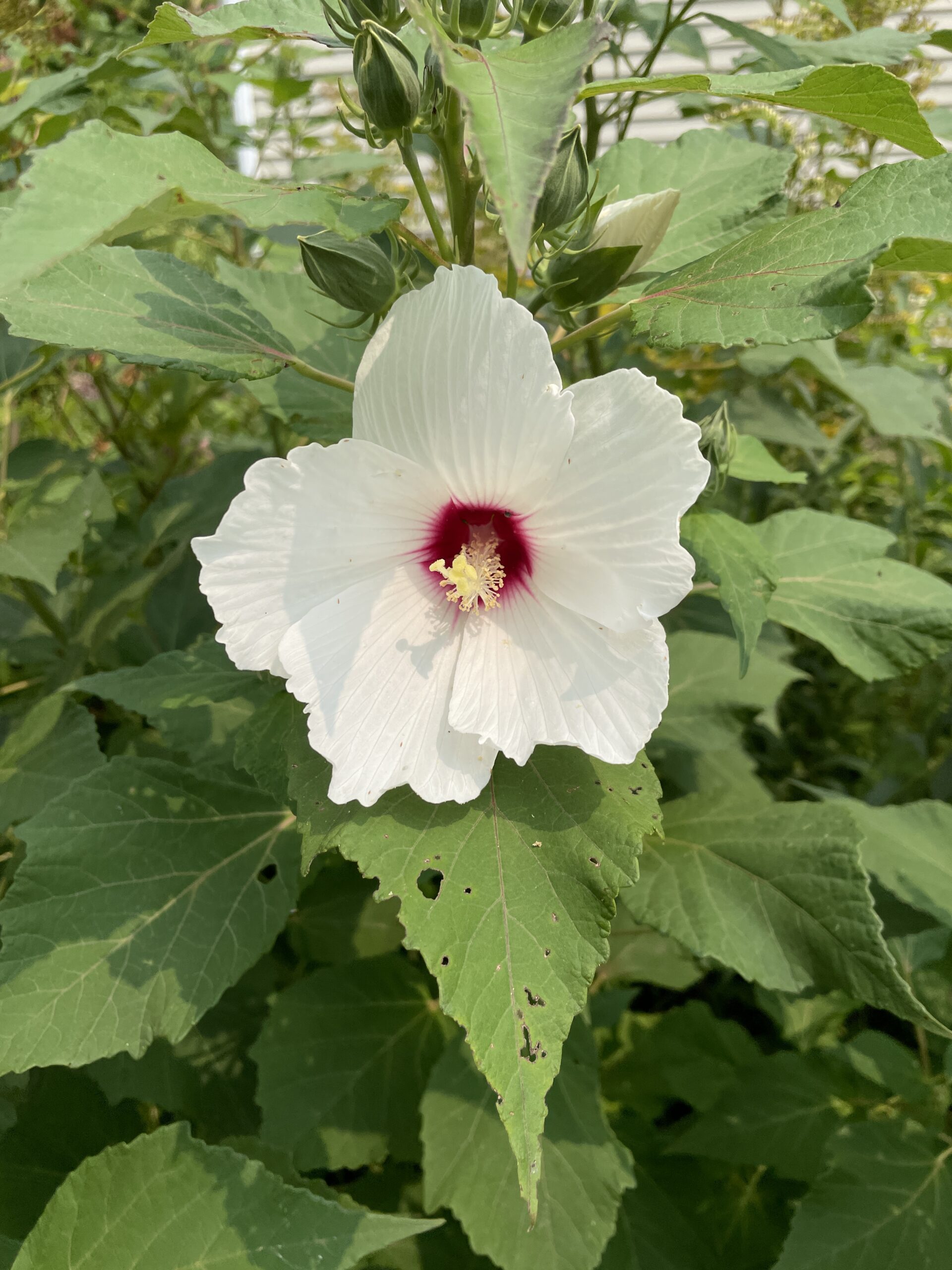
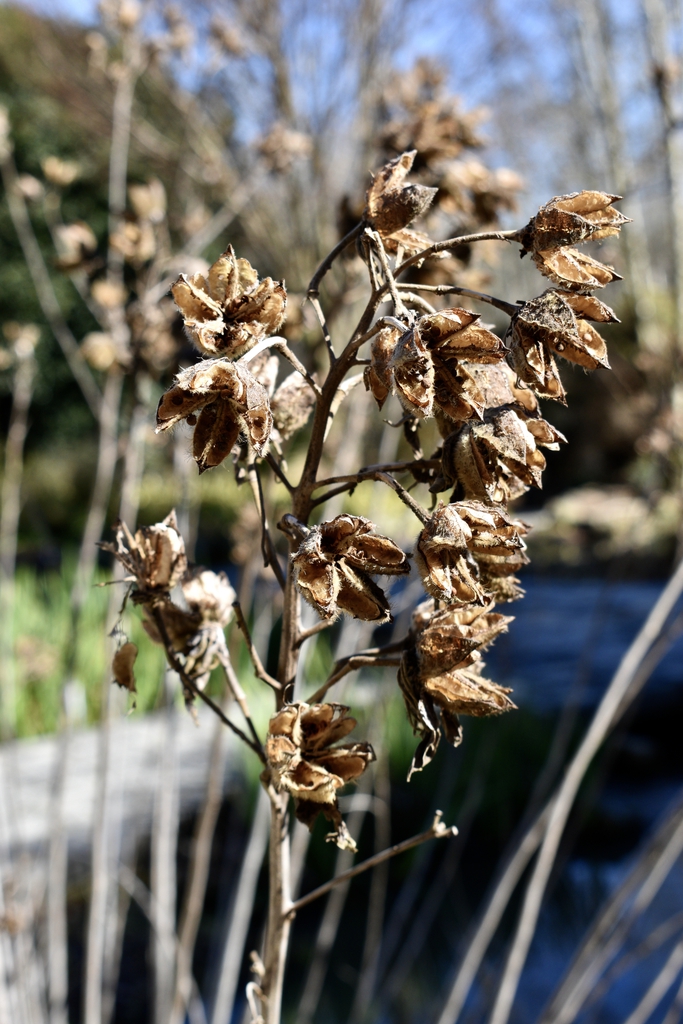
Hibiscus moscheutos
Swamp Rose Mallow
Hibiscus moscheutos, Swamp Rose Mallow is the gorgeous, hardy native relative of the gorgeous tropical hibiscus grown in greenhouses. In its natural setting, Swamp Rose Mallow is found in sites that range from moist to wet, but established garden plants can handle average soil, unless there’s a drought when a glug from the hose might help. This hardy hibiscus luxuriates in the torrid days of summer, and in some years the new growth doesn’t even emerge until June when the days really, really start warming up. The salad plate-sized flowers are very impressive, and range in color from white to deep pink. The plant itself can attain heights of over six feet, and it has a few pest problems, notably Japanese beetles. Other gardeners in the neighborhood will drool with envy at your well-grown specimen of Hibiscus moscheutos.
Photo credits:
(1+3) Michael Jacob
(2) Native habitat, Chris Kneupper CC BY-NC 4.0, North Carolina Extension Plant Toolbox.
(3) Seed Pods – February – Wake Co., NC, Cathy DeWitt,
attribution: CC BY-NC 4.0, North Carolina Extension Plant Toolbox.

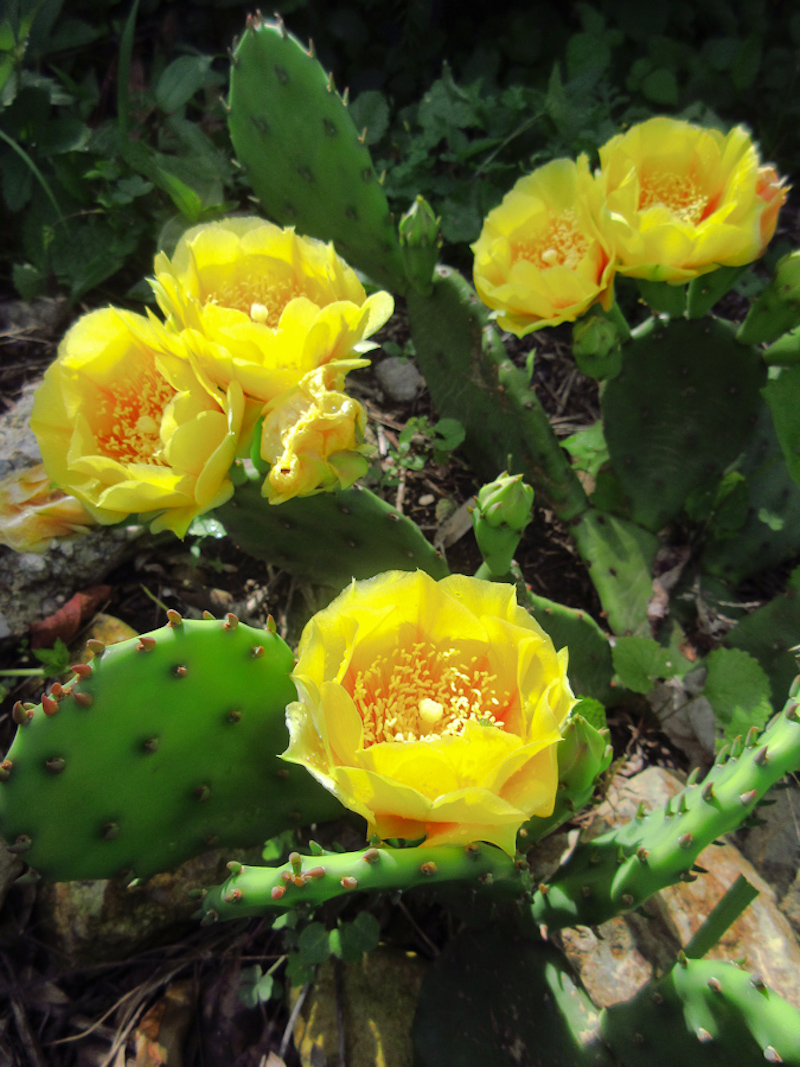


Opuntia humifusa
Eastern Prickly Pear Cactus
Opuntia humifusa, Eastern prickly pear has a real high cool quotient. One of the few hardy succulents native to New Jersey, it needs to be sited carefully in a very well-drained location, in gravelly or sandy soil, preferably in full sun. The height is usually less than a foot as the pads, which are swollen stem-segments, not leaves, are pretty prostrate. Probably not a good plant where curious kids hang out because those pads are covered with tiny little bristles that can stick to your skin and are really annoying.
The lovely yellow flowers open in June and July, each lasting but a day or two, and are followed by an edible fruit that Native Americans ate, either fresh or dried. In the Ramapo Mountains, above Hawk Rock, there is a spot called Cactus Ledge, a sunny glade covered with this plant that in early summer is a sight to behold.
Photo credits:
(1) Kazys Varnelis
(2) Wild Ridge Plants
(3) Douglas Goldman, USDA, CC BY-NC 4.0, North Carolina Extension Plant Toolbox.
(4) skdavidson, CC-BY-SA 2.0, NC Cooperative Extension and NHC Arboretum
